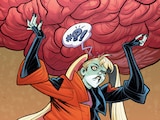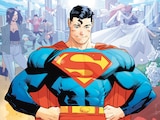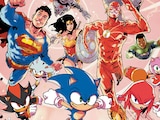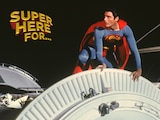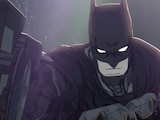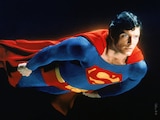Valentine’s Day is upon us—a day devoted to the heart-shaped ideals of love, romance and devotion. It’s a full 24 hours to celebrate that special someone in your life, and that’s true within the DC Universe as well. Whether we’re talking about Superman and Lois Lane, Aquaman and Mera, Barry Allen and Iris West, Midnighter and Apollo, or even Monsieur Mallah and the Brain, there are many examples of inspiring, passionate relationships that have endured through ups, downs, ins, outs and a continuity reset or two.
And then there’s the Joker and Harley Quinn. Although the terrible twosome are as recognizable together as Batman and Robin, their coupling represents the horrors of a toxic, selfish relationship pioneered by the Joker’s evil mind and Harley’s yearning for love.
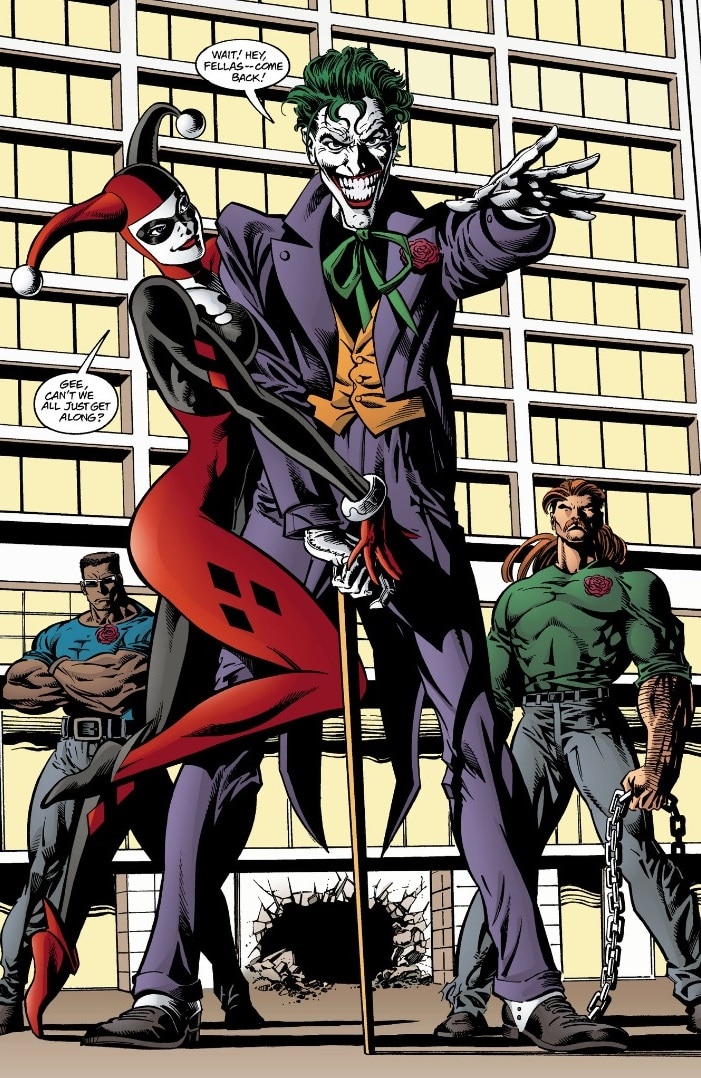
From the very beginning, with the award-winning comic book one-shot Mad Love, we see how Harley’s criminal career sprang from her affection for the Joker and how those feelings were weaponized. It’s also there where we see the first of several instances of Harley failing to take his murderous hints and returning to his side.
Since then, Harley has grown more independent and heroic, finding love with her best friend Poison Ivy. Her tumultuous relationship with the Joker is a thing of the past. But could it have ever worked? Was it always doomed? Let’s look at key moments throughout their history to find out.
Asylum Amore

As most of us already know, Harley was once Dr. Harleen Quinzel, a recently hired psychologist working at Arkham Asylum. Taking a special interest in the Joker, she was immediately dazzled by his romantic advances and performative flair. The big hook, however, were the stories he told her of his childhood, rife with abuse and violence. Seeing a wounded soul crying out for attention through his super-villain antics, Harleen fell in love with the Clown Prince of Crime and even broke him out of Arkham after his latest arrest at the hands of Batman. From then on, she would be known as Harley Quinn, Joker’s right-hand gal and—in her mind—lifelong lover.
This personal transformation, along with her attempts to cook up criminal plots capable of meeting his twisted approval, became Harley’s grand romantic gesture. Everything she did was an effort to appease someone whom she found to be worthy of love, and she was so blinded by this mistaken belief that Harley found herself in harm’s way on several occasions.
The Joker, repeatedly growing tired of Harley’s appeals to his favor, often resorted to attempts on her life. From trapping her in a rocket ship set to crash to shooting her point blank, these homicidal attempts routinely became the rhythm for the Joker and Harley’s relationship. But to Harley, they were merely playful gags from an unappreciated genius.

The rocket ship incident ironically led to Harley meeting her future real love, Poison Ivy. Tasked with keeping people safe with her botanical superpowers in exchange for her freedom, Ivy was on probation granted by Batman when she found Harley at the crash site of Joker’s rocket ship. Empathizing with a woman wronged by a man, Ivy nursed Harley injuries and gave her an anti-toxin to prevent her from being poisoned by her deadly biochemistry. It also gave Harley increased strength and stamina.
With this first offering of friendship also came a frequently repeated warning from Ivy: stay away from the Joker. Poison Ivy never thought the Joker was a healthy partner for Harley and would frequently try to demonstrate this to her unreceptive best friend. One frightening example was when Ivy dressed as Harley to prevent her from getting involved with the Joker, leading to Pamela being gunned down by the Clown Prince. This, along with other blatant warning signs, kicked off a streak of Harley operating on her own, away from being Joker’s henchwoman and carving an antiheroic space for herself.
Smart, Sassy…and Single

With Harley beginning to break free from the Joker’s clutches, the Ace of Knaves began a new toxic trend: feigning remorse over his treatment of her. This would take various twisted forms, from loudly proposing marriage and murdering whomever he claimed was threatening their relationship to letting her in on his plans for Gotham. He even claimed Batman as a common enemy between them, which for a time delighted Harley to have an enemy the two could battle against. However, when Batman began to trust Harley’s more noble nature to help in capturing the Joker, Harley looked further into herself to decide what kind of person she wanted to be, and whom that person would most align with.
Meanwhile, the Joker kept to his usual routine of terrorizing Gotham, growing darker and working alone. Harley, on the other hand, would continue to make new friends and form new connections, first with Catwoman and Poison Ivy on the Gotham City Sirens, then later on as a part of the Suicide Squad. This time away from the Joker, frequently in the company of other antiheroes, gave Harley Quinn examples of camaraderie, companionship and friendship—something that always came with an awful price whenever she was with her old boss/boyfriend. Ultimately, she began having crises of faith, sometimes conducting therapy sessions with her old-pre Harley self.

When Harley decided to cease being codependent, it brought with it a reinvention of who exactly Harley Quinn was, including what costume she’d wear. Harley’s colors blended from red and black to pink and blue, signaling a new form of independence while keeping true to the wild and wacky nature of her character, with just enough of the clown motif still intact.
Eventually Harley Quinn and the Joker’s paths would cross once again when Harley broke into Arkham Asylum to free a friend. Eager to taunt and reclaim Harley’s agency as his own, Joker only succeeded in forcing Harley to confront him, overpowering him in his cell and defeating him both physically and spiritually, refusing to give in to his wicked charms. After years of self-reflection, time and effort, Harley found herself a much stronger, smarter person who balks at the idea of rejoining the Joker again. To do so would be a betrayal of the strength she’s acquired and the people who believe in her.
A Healthy, Happy Harley?

With this story, the answer of whether Joker and Harley could ever work—at least in this universe—is made clear. Joker only cares for himself, and all gestures of affection are for the greater purpose of satisfying his goals, and when they no longer require the aid of whomever he’s enticed to assist him, that person becomes disposable. Lately, he’s been toying with romance again with his new, more clearly psychotic partner, Punchline. We’ll see how she ultimately fares.
As for Harley, rather than looking at this as a failed relationship, we should see it as the affirmation of strength one can find from leaving a toxic, unhealthy pairing. As Harley and Ivy have proven, love is around the corner if you’re strong enough to believe in your own power. And if that’s not a happy Valentine’s Day sentiment, we don’t know what is!
Donovan Morgan Grant writes about comics, graphic novels and superhero history for DC.com. Follow him on Twitter at @donoDMG1.
NOTE: The views and opinions expressed in this feature are solely those of Donovan Morgan Grant and do not necessarily reflect those of DC or Warner Bros. Discovery, nor should they be read as confirmation or denial of future DC plans.




